
Ringworm of the scalp is a superficial fungal infection of the scalp. The condition is also known under many other different names such as herpes tonsurans, ringworm of the hair, scalp ringworm or tinea tonsurans. Medically, it is referred to as tinea capitis. Ringworm of the scalp is just one of the numerous forms of ringworm, a fungal infection that affects the skin, nails and scalp. This condition is closely related to similar fungal infections such as ringworm of the body, athlete’s food or jock itch. Ringworm of the scalp is most commonly found in toddlers and schoolchildren. In some cases, ringworm of the scalp may look like psoriasis or bad dandruff. To confirm the diagnosis, doctor will sometimes have to send a hair sample or a scraping of the skin to the laboratory.
Causes of scalp ringworm
Microorganisms that attack the outer layer of the skin and invade the hair shaft cause the scalp ringworm. The fungi and their spores can live on combs, brushes, towels, furniture or sheets. The fungus is usually spread by touching or sharing infected objects. It is also possible to contract the infection from a person that is a carrier of the fungi but has no obvious signs of the infection. Large outbreaks have been known to occur in schools and other places where children are in close quarters. It is estimated that ringworm of the scalp occurs in 3 to 8 percent of pediatric population.
Animals may also have fungal infections on their skin, and pass it to the humans, especially children. Children are generally more prone to this condition than the adults are. This is because the amount of oil on the scalp significantly increases after puberty and makes fungal invasions less likely to occur.
Symptoms of scalp ringworm
This condition often looks like severe dandruff or psoriasis that occurs on various places on the scalp. Very often, the infection causes development of bald patches, which gradually spread on larger areas. The bald patches are inflamed and scaly. There are also painful boils on the scalp. Sometimes, especially if the patient hair is dark, the small black dots may be visible inside of the patches. The most severe infection manifests as a large swelling in a section of the scalp that usually oozes and feels tender. The severe infection is often accompanied with fever and swelling of the glands in the neck.
Treatment of scalp ringworm
Untreated scalp ringworm may cause permanent hair loss or scarring. Fungal infections are very persistent and contagious if not treated, and the treatment should start as soon as the first symptoms are identified. The treatment usually involves medications such as Griseofulvin, which is taken by mouth as a liquid or tablet, and Terbinafine hydrochloride, an oral granule medication that can be sprinkled on food.





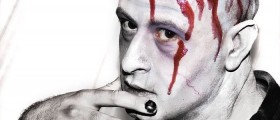
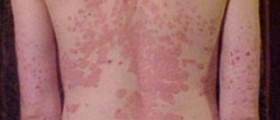

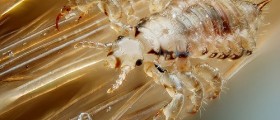



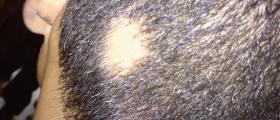

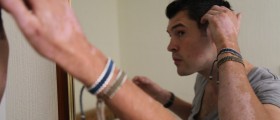


Your thoughts on this
Loading...